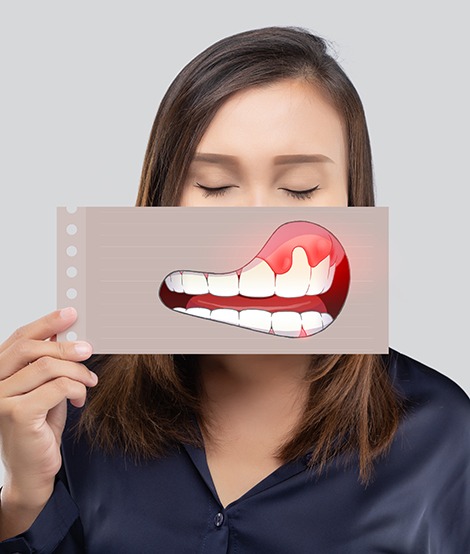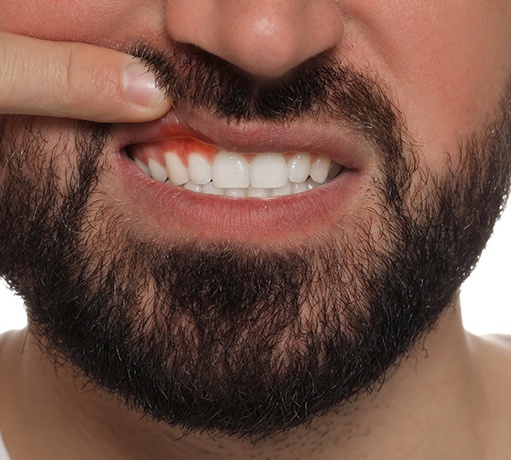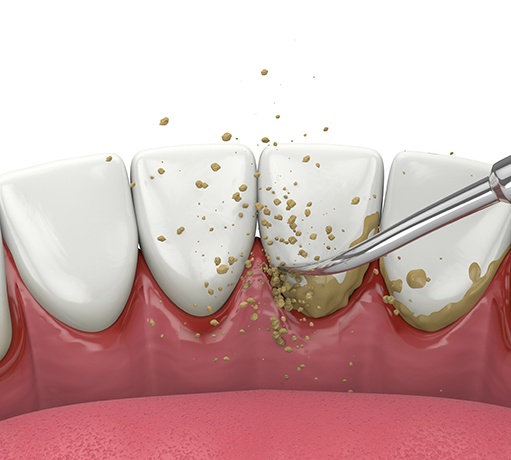Gum Disease Treatment – Medford, NJ
Attacking Gum Disease at the Source

Although many people think about their teeth when they consider their dental health, the gums are just as important. Periodontal disease affects nearly half (about 47%) of adults who are 30 years or older, making it a pervasive problem. It starts out relatively benign, but if left unaddressed, it can progress into a dangerous condition. Not only is it the leading cause of tooth loss, but it can also enter the bloodstream and impact other areas of your body.
It’s important to contact us to schedule an appointment as soon as you notice symptoms. One of our dentists will examine your mouth and suggest an appropriate solution based on your individual circumstances. Keep reading to learn more about how we treat gum disease.
Why Choose Dr. Euksuzian & Dr. Braatz Family and Cosmetic Dentistry for Gum Disease Treatment?
- Helping Medford Residents for Nearly 30 Years
- Dental Insurance Welcome
- Nitrous Oxide Available
What is Gum Disease?

Gum disease, also known as periodontal disease, develops when unhealthy bacteria penetrate below your gumline and cause an infection. There are two types, and they are:
- This is the earliest stage of gum disease and can be reversed by implementing better dental hygiene habits at home, like brushing and flossing twice daily.
- This later stage occurs if gingivitis is allowed to progress. It can cause receding gumlines, which increases the risk of losing permanent teeth. This form can often be managed but may not be entirely curable.
Although it can impact people of all ages and genders, it tends to be more common in men than women. You might also be at an increased risk if you smoke or use tobacco products, don’t follow a consistent oral care regimen, are genetically predisposed, or have another compromising condition like diabetes.
Symptoms of Gum Disease

The earliest indicators of gum disease can be easy to miss if you’re not sure what to look for, which only allows the disease to progress. That means it’s best to catch it early if you can. Some signs of gingivitis to look out for include:
- Halitosis, or chronic bad breath
- Bleeding gums when you brush or floss
- Red or inflamed gums
- Tenderness along your gum line
If the disease worsens, you could start to notice additional symptoms like:
- Pain while chewing
- Gum recession
- Tooth sensitivity as more of the roots are exposed
- Loose or lost permanent teeth
How Do We Treat Gum Disease?

The treatment for gum disease can vary depending on the severity of your condition. Before we can make a recommendation, you must schedule a consultation with one of our dedicated dentists. They’ll perform an oral examination and then can make suggestions based on their findings.
Scaling & Root Planing

Bleeding, tender, or inflamed gums often mean that bacteria are attacking your soft tissues, which can eventually also damage your teeth and jawbone. One common method of addressing this is scaling and root planing.
This two-part process typically requires multiple appointments. First, our team uses specialized instruments to remove plaque or tartar buildup from around your teeth and below the gumline. This can involve reaching all the way into the pockets of your gums to ensure no unwanted germs are left behind.
Then, we’ll smooth out the roots of your teeth which encourages your gum tissue to reattach to protect your roots.

